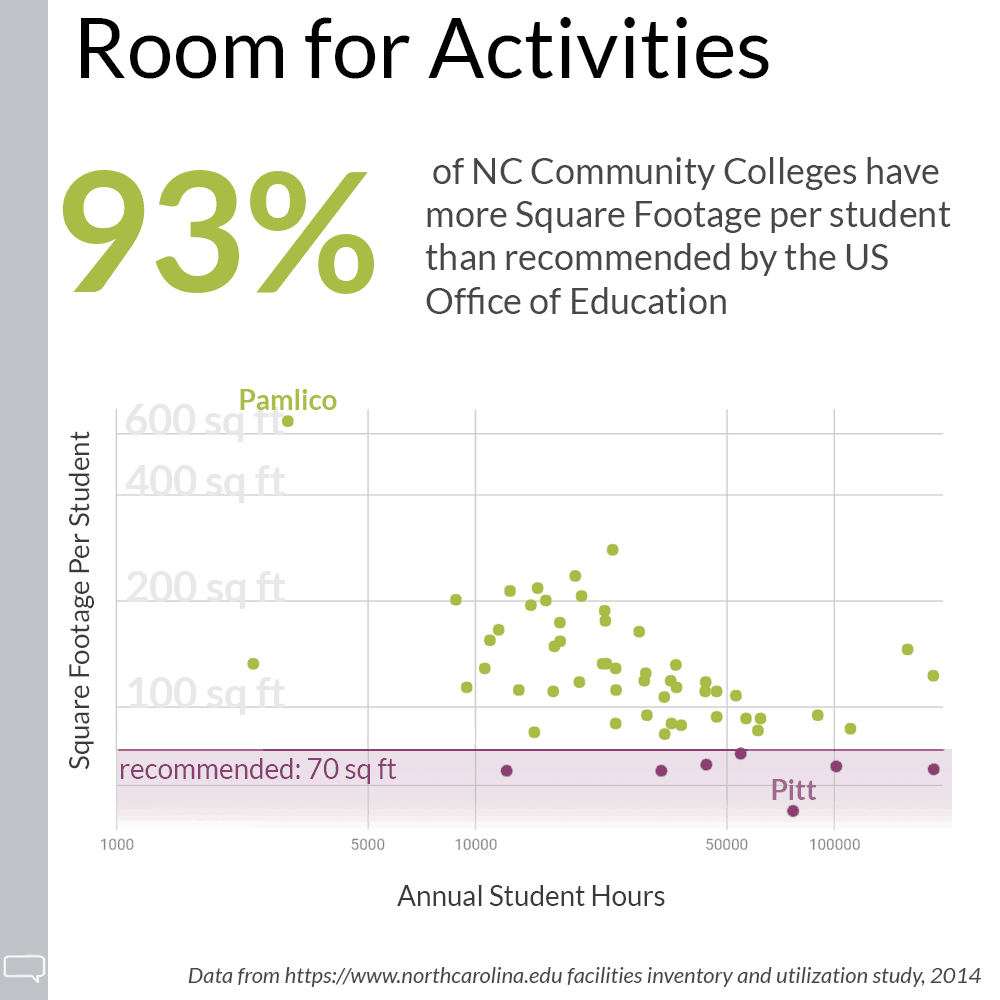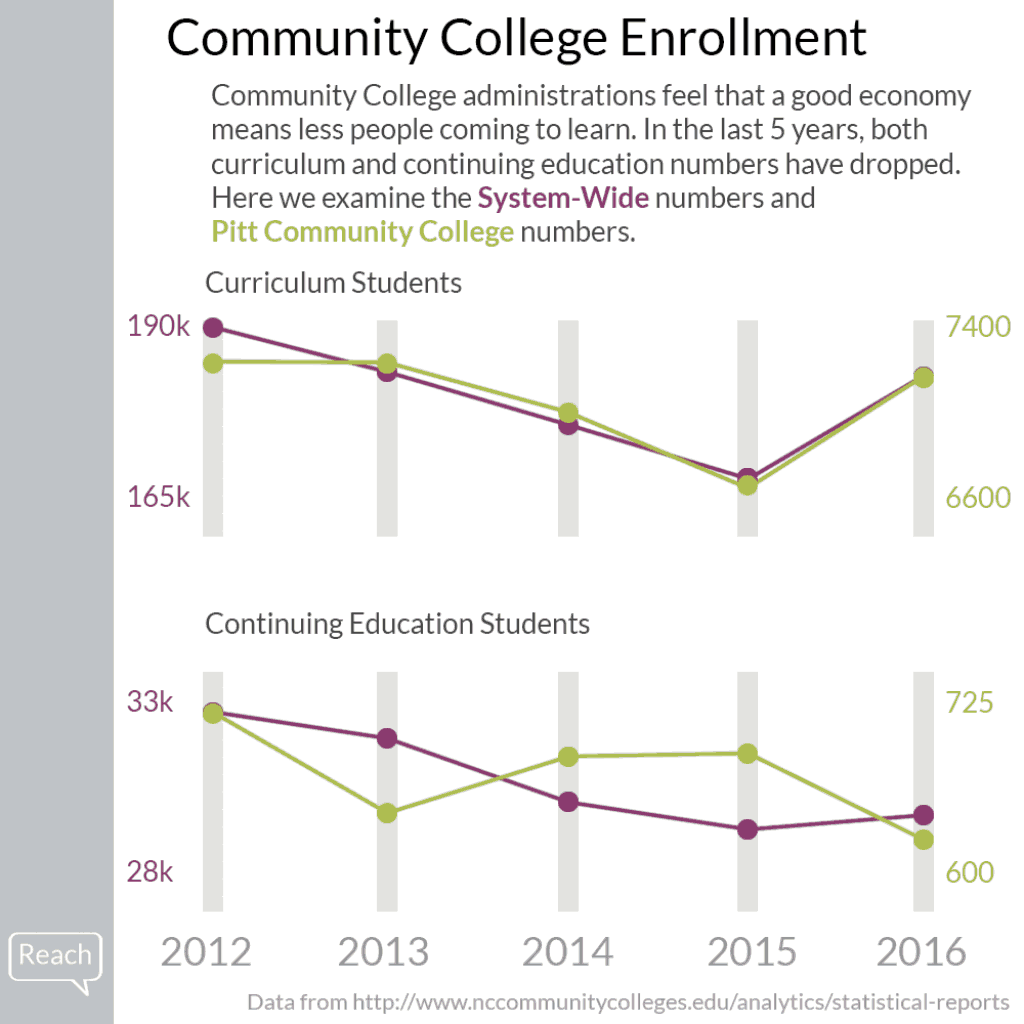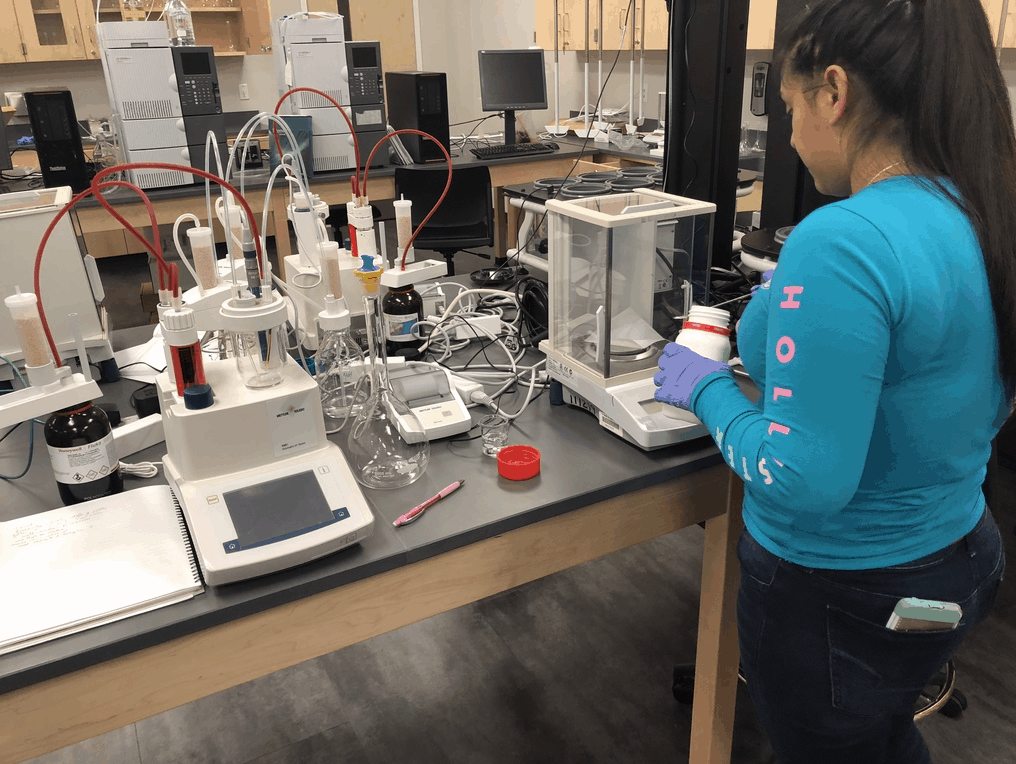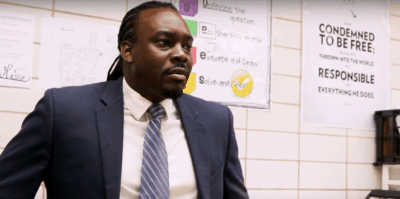Located in Winterville, just outside of Greenville, Pitt Community College (PCC) is one of the largest community colleges in the state. Recently we met with Dr. Dennis Massey, the school’s president, and other school faculty. They shared their perspective on the present and future of PCC and the community college system, and then showcased various programs on campus ranging from the welding program to their sparkling new health sciences building to their automotive program. Here are five takeaways:
1. Renovations for community colleges
What it means for the system: The NC Community College system and the respective community colleges receive less money than the University system for building renovation and construction. As an example, the recent $2 billion Connect NC Bond for infrastructure gave $350 million to the 58 community colleges while sending $980 million to the 17 universities. The community colleges must rely on funding from their home counties and service areas, along with donations, to fund new construction.
What it means for PCC: The Clifton E. Everett Library overlooks Highway 11, the main entryway into campus and it is about to undergo a serious upgrade. A year ago, Pitt County Board of Commissioners and Pitt CC’s Board of Trustees brought more than $4 million to the table for renovations to the library. The building will become more open, collaborative, and include a range of new technology.
2. Students per square foot
What it means for the system: The US Office of Education created standards for square footage per student at each academic level in the 1960s. This is still widely used for allocating resources among public institutions. It calls for 132 square feet per student at the university level and 70 square feet per student at two-year institutions. As of 2014, North Carolina has 114.7 square feet per student for public universities and 106 square feet per student at community colleges. Only six community colleges fall below the 70 square feet suggested by the Office of Education. Nearly 40 percent of the community colleges actually exceed the university level of space.
What it means for PCC: Pitt is stretched to the limits with a total of 51 square feet per student. This makes it the most crowded post-secondary institution in North Carolina. Despite adding a 78,000 square foot STEM-focused building since the most recent report, they still remain last in square feet per student.

3. Annual enrollment decline
What it means for the system: Historically, enrollment in community colleges increases when the economy is not performing as well and decreases when the economy improves. At present, enrollment is down in North Carolina as the economic recovery is felt more broadly. Full-Time Equivalency measures the number of full course loads being taken in the student population. This chart shows FTE changes over the last 5 years.
What it means for PCC:
PCC has seen a trend similar to that of the system as a whole. PCC receives state funding on a per student basis meaning a decline in numbers affects the funding the school receives and can limit the administration’s ability to add new programs.

4. Understanding service areas
What it means for the system: Every five years, the State Board of Community Colleges reviews the service areas for each community college. The service area is defined as, “The geographic area to which the State Board of Community Colleges has assigned community colleges the authority and responsibility to provide education and training services for constituents within that geographic area.” Community colleges are prohibited from marketing and outreach outside of their assigned service areas.
What it means for PCC:
Pitt CC has been assigned the service area of Pitt County. They have campuses in Winterville, Farmville, and Greenville. PCC is allowed to market and seek corporate partners within their county. Despite this, President Massey says “we have to consider regional needs. We have more choices than nearby community colleges so we pull kids.” He believes, “their is a way for community colleges to be the answer for eastern North Carolina.”
5. Early college numbers
What it means for the system: The Career and College Promise program went into effect in 2012. This program allows high schoolers to receive credits towards a college degree while finishing high school following the Career and College Ready Standards. Within two years, the number of students enrolled quadrupled statewide.
What it means for PCC: PCC’s early college first opened in 2015 with 74 students and has since added over 75 additional students. Currently, construction is underway for a new building. PCC’s work with high school students also includes the Vision’s program which assist high school students who have financial needs. The program supports these students through graduation.




